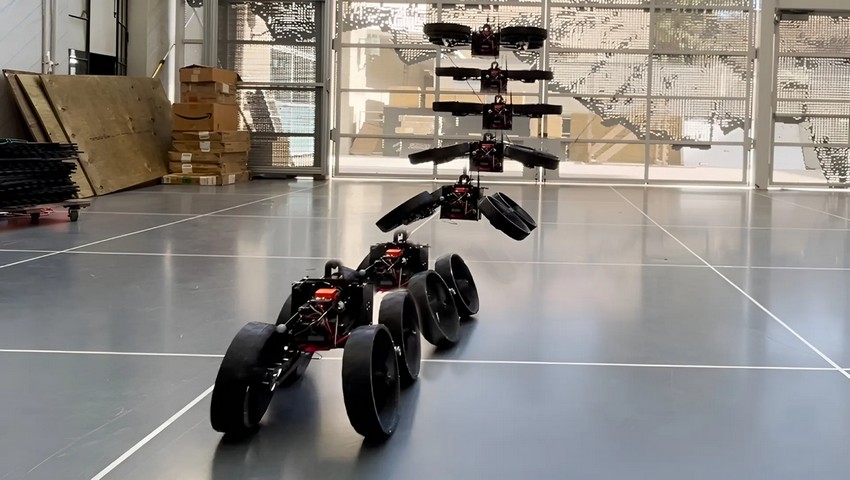
Real-life transformer: Drone morphs mid-air
Engineers at Caltech have successfully created a real-life “Transformer” – a groundbreaking development in robotics for aerial and ground operations. Named ATMO (short for Aerially Transforming Morphobot), the robot can transition from a flying drone to a rolling rover while still in mid-air. This innovative design offers a solution to a long-standing challenge faced by hybrid robots: getting stuck on rough terrain when attempting to transform after landing.
ATMO's unique ability to switch modes seamlessly – without pausing or requiring a perfectly flat landing surface – significantly boosts its agility and reliability. This capability could prove invaluable in a wide range of applications, from autonomous commercial deliveries to robotic exploration in unpredictable or hazardous environments.
The robot’s clever mechanism involves four flight thrusters, whose protective shrouds double as wheels for ground mobility. The entire transformation is managed by a single central motor that precisely adjusts a joint, moving the thrusters up for drone mode or down for drive mode.
According to Ioannis Mandralis, a graduate student in aerospace at Caltech and the lead author of the research, the robot's design is inspired by nature, mimicking how animals adapt their bodies for different types of movement. This mid-air transformation unlocks substantial possibilities for improved autonomy and resilience in robots.
However, executing such a mid-air transition presents complex aerodynamic challenges. Forces near the ground, combined with the robot's continuously changing shape, create significant turbulence and instability. Overcoming these dynamics has been a persistent struggle for the aerospace industry for over decades.
To address these challenges, the Caltech team conducted extensive tests, including load cell experiments and smoke visualization in Caltech's Center for Autonomous Systems and Technologies (CAST). The insights gained informed the development of ATMO's sophisticated control system, which utilizes an advanced method known as model predictive control. This system constantly anticipates the robot's future behavior, enabling it to rapidly adjust its actions and maintain stability during transformation. Mandralis emphasizes that this control algorithm represents the project's most significant innovation, dealing with a dynamic system previously unexplored in this context.
The research is detailed in the paper “ATMO: an aerially transforming morphobot for dynamic ground-aerial transition”.
This breakthrough allows ATMO to perform stable “dynamic wheel landings,” with its wheels already in position to immediately begin rolling. By solving the transition challenge, ATMO opens new doors for versatile robotic systems that can adapt to dynamic environments without human intervention. Potential use cases include last-mile delivery in urban areas, exploration of disaster zones, and extraterrestrial missions on rough planetary surfaces.
Projects like ATMO, alongside QuData’s advanced UAV solutions, highlight a key trend in the development of modern robotics: the creation of integrated, multifunctional systems that seamlessly adapt to any environment and task. This approach significantly expands automation capabilities and boosts efficiency across a wide range of industries.
